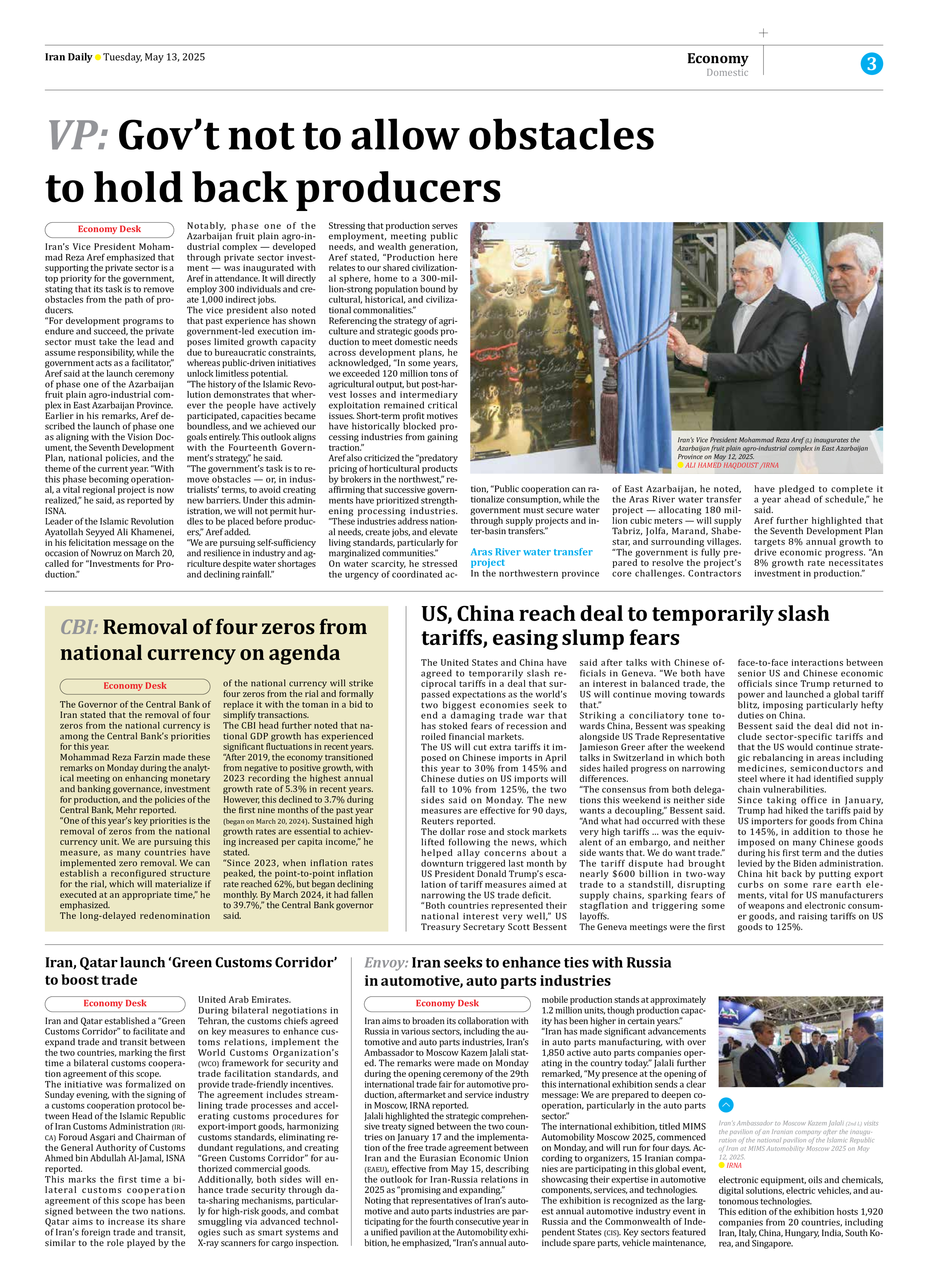
Copy in clipboard...
US, China reach deal to temporarily slash tariffs, easing slump fears
The US will cut extra tariffs it imposed on Chinese imports in April this year to 30% from 145% and Chinese duties on US imports will fall to 10% from 125%, the two sides said on Monday. The new measures are effective for 90 days, Reuters reported.
The dollar rose and stock markets lifted following the news, which helped allay concerns about a downturn triggered last month by US President Donald Trump’s escalation of tariff measures aimed at narrowing the US trade deficit.
“Both countries represented their national interest very well,” US Treasury Secretary Scott Bessent said after talks with Chinese officials in Geneva. “We both have an interest in balanced trade, the US will continue moving towards that.”
Striking a conciliatory tone towards China, Bessent was speaking alongside US Trade Representative Jamieson Greer after the weekend talks in Switzerland in which both sides hailed progress on narrowing differences.
“The consensus from both delegations this weekend is neither side wants a decoupling,” Bessent said. “And what had occurred with these very high tariffs ... was the equivalent of an embargo, and neither side wants that. We do want trade.”
The tariff dispute had brought nearly $600 billion in two-way trade to a standstill, disrupting supply chains, sparking fears of stagflation and triggering some layoffs.
The Geneva meetings were the first face-to-face interactions between senior US and Chinese economic officials since Trump returned to power and launched a global tariff blitz, imposing particularly hefty duties on China.
Bessent said the deal did not include sector-specific tariffs and that the US would continue strategic rebalancing in areas including medicines, semiconductors and steel where it had identified supply chain vulnerabilities.
Since taking office in January, Trump had hiked the tariffs paid by US importers for goods from China to 145%, in addition to those he imposed on many Chinese goods during his first term and the duties levied by the Biden administration.
China hit back by putting export curbs on some rare earth elements, vital for US manufacturers of weapons and electronic consumer goods, and raising tariffs on US goods to 125%.







